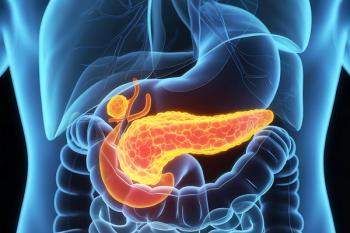
- The Column-08-06-2019
- Volume 15
- Issue 8
Diagnosing Multiple Sclerosis Using Breath Biomarkers and GC–MS
Researchers from the University of Huddersfield present new data and announce further studies which show great potential for the development of a for a noninvasive multiple sclerosis diagnostic tool which uses GC–MS.
As a chronic neurological disease, multiple sclerosis affects the brain and spinal cord causing a wide range of symptoms, from problems with vision and movement to sensation or balance. The condition can cause serious disability, but the range and severity of symptoms varies with mild forms also existing.
Diagnosis of the disease is based upon visible symptoms of the disease and confirmed by examination of the cerebrospinal fluids (CSF), an invasive and painful procedure. Magnetic resonance imaging of the brain and spinal cord can also be used for diagnosis, and according to a recent publication, could also predict how their condition will progress, including how disabled they are likely to become (1). However, as routine diagnostic tools, neither technique is adequate.
“There are over 100,000 people with multiple sclerosis in the UK and we often hear that the path to diagnosis is an incredibly stressful time,” said Susan Kohlhaas, Multiple Sclerosis Society Director of Research.
As such, there is a drastic need for a noninvasive diagnostic tool. One promising avenue is that of biomarker analysis, with a 2017 (2) preliminary study identifying numerous biomarkers in the breath of multiple sclerosis patients.
That initial study utilized gas chromatography–mass spectrometry (GC–MS) and a nanomaterial-based sensor array to identify significant differences in the volatile organic compounds (VOCs) of multiple sclerosis patients and controls. The new study will confirm the initial results and look to use these results to create a diagnostic tool.
Speaking at the Multiple Sclerosis Society Multiple Sclerosis Frontiers Conference in Bath, UK, Phoebe Tate from the University of Huddersfield’s Centre for Biomarker Research said “The new work looked at more subtypes of multiple sclerosis, whereas the 2017 study just looked at relapsing multiple sclerosis. Additionally, the new study also looked at primary multiple sclerosis and secondary multiple sclerosis in to find out if the different subtypes, such as the more inflammatory, actively demyelinating relapsing-remitting multiple sclerosis, and the less inflammatory, progressive primary progressive multiple sclerosis and secondary progressive multiple sclerosis, can be differentiated by a breath test, as well as finding a diagnostic test.”
“The techniques used for diagnosis are invasive, expensive, and often laborious, so this exciting development would address a major unmet need. Having a lumbar puncture and even an MRI scan can be an uncomfortable and unsettling experience, which we know people with multiple sclerosis are keen to change,” said Kohlhaas.
The researchers are now preparing a larger three-year study with 500 people, which will start later in 2019. This will determine if the test can be rolled out across the NHS, and if it can help to determine how multiple sclerosis progresses.
For more information, please visit:
References
- W.J. Brownlee et al., Brain doi:10.1093/brain/awz156 (2019).
- Y. Broza et al., ACS Chem. Neurosci. 8(11), 2402–2413 (2017).
Articles in this issue
over 6 years ago
Vol 15 No 8 The Column August 2019 Europe & Asia PDFover 6 years ago
Vol 15 No 8 The Column August 2019 North American PDFover 6 years ago
How Much Longer Can Chromatography Last?over 6 years ago
Meeting Review: Emerging Separation Technologies 2019over 6 years ago
Tips & Tricks GPC/SEC: High Temperature GPC versus Ambient GPCover 6 years ago
UK Launches Community for the Analytical Measurement Scienceover 6 years ago
Measuring Chitosan Molecular Weight Using AF4–MALS-RIover 6 years ago
Shimadzu Wins Two Red Dot Design AwardsNewsletter
Join the global community of analytical scientists who trust LCGC for insights on the latest techniques, trends, and expert solutions in chromatography.





